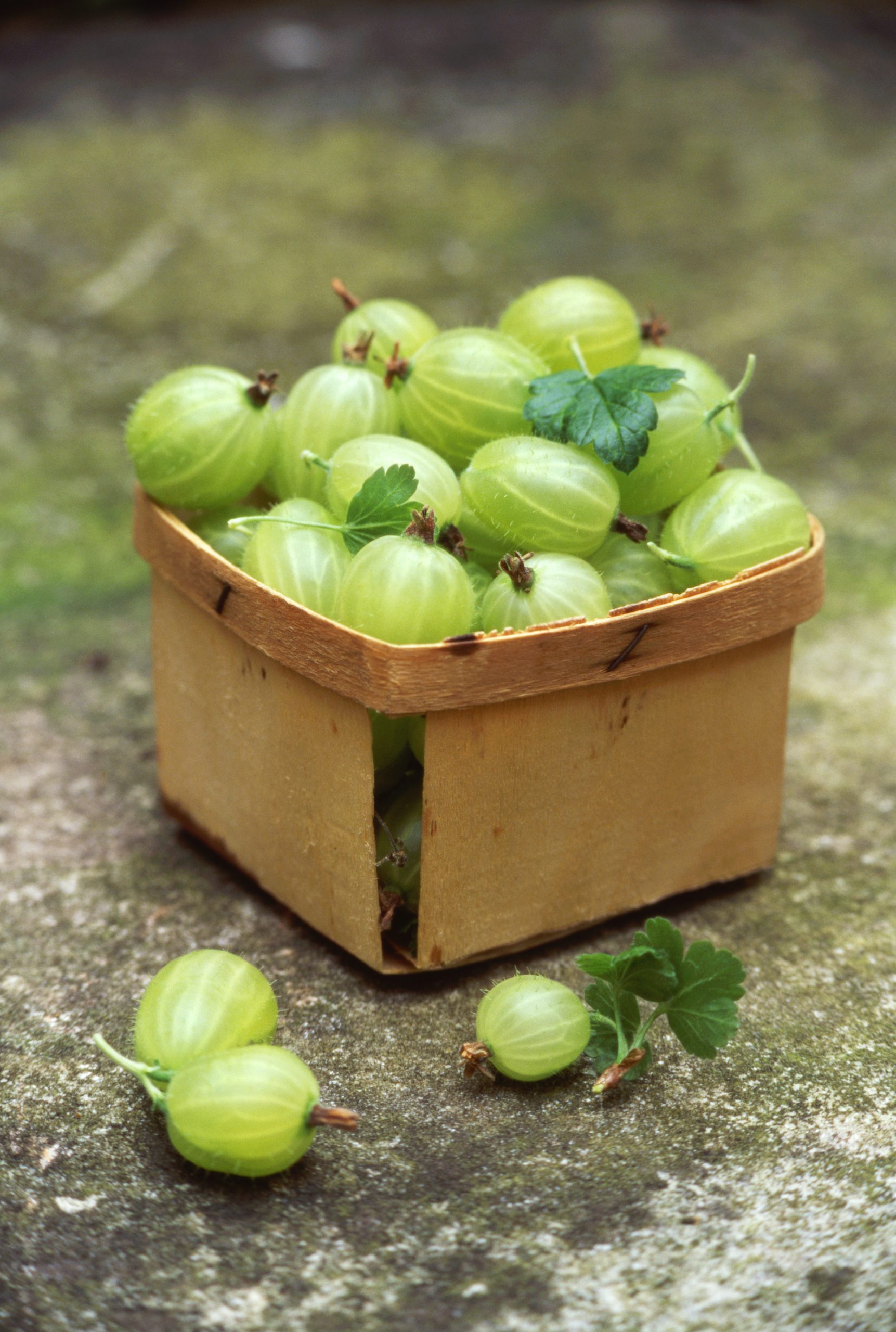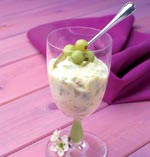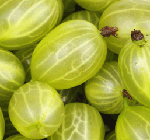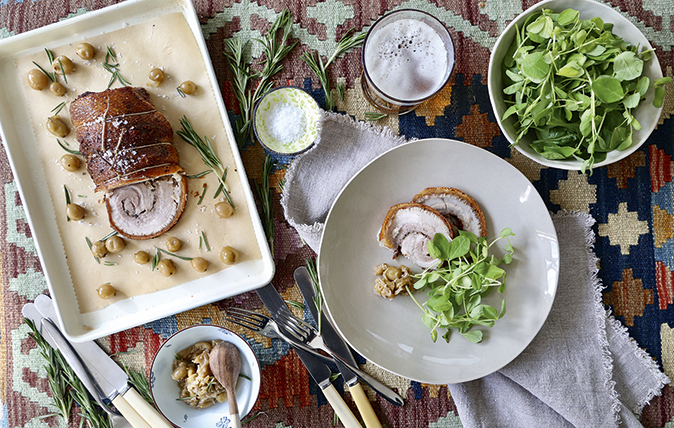Tom Parker Bowles: Gooseberries are 'a fat green blob wearing three-day stubble' — but I love them anyway
The gooseberry might be the least sexy of all fruit, resembling a fat green blob wearing a three-day growth of stubble. Yet it adds a welcome sharpness to jellies, jams and a simple fool, says Tom Parker Bowles.


The gooseberry is not an easy fruit to love. Not only do you have to battle through a perilously thorny bush to reach your bounty, but, once there — hands usually resembling the aftermath of a brawl with a particularly spiteful alley cat — you’re greeted by a fat green blob, wearing what looks like a three-day growth of stubble. Worse still, unless you time your expedition with immaculate precision, you’ll find a berry so spectacularly sour that it doesn’t just make the tongue pucker, but makes the soul wince, too.
This meant that gooseberry picking, as a child, ranked one step below collecting eggs from the broody, pecky hen. And believe me, that particular clucking chore took the courage of Hercules and the cunning of Moriarty to escape unscathed. Gooseberries, on the other hand, were one of those rare fruits that I simply didn’t trust. Something about those bristles unnerved me. Also, they bit back.
In terms of reputation, the gooseberry is in urgent need of some slick PR spin. The first image that springs to mind, after those hairs, is to ‘play gooseberry’. That is, to be a glum passion killer, the unwanted third wheel to an already amorous pair. It all goes back to the fruit being a Victorian euphemism for chaperone. Usually some stern-bosomed, moustachioed matron who tuts at uncovered table legs and is sent along to ensure proper standards are upheld. Meaning there’s scant chance of sly jiggery-pokery. Sexy, it ain’t.
It’s also a fruit that seems to have rolled out of fashion. Whereas rhubarb, quince and damson wear their sharpness with aplomb, the gooseberry is a rare visitor to the more modish menus, which seems a shame.
[READ MORE: How to grow your own gooseberries]
Native to Europe and a lover of the cold and damp, it was once the star of 19th-century ‘gooseberry clubs’, where keen growers, particularly in the Midlands and the North, vied to produce ever larger and sweeter varieties. George W. Johnson, the British gardening writer, writes, somewhat snootily, of the huge specimens grown around Manchester, by ‘the lowest and most illiterate members of society, [who] by continual experimentation and perseverance in growing and raising new sorts, have brought the fruit to weigh three times as much as before’. These days, you’d be lucky to find gooseberries in a decent greengrocer, let alone your average supermarket.
As for their etymology — a ‘culinary garbling’, according to Jane Grigson. Some say that the name was a result of their use as medieval stuffing for goose. Others argue (they always do) that the word derives from krûsil, the Flemish for crisp berry, which became groser or gorzer in French. Indeed, the French call it the groseille a maquereau, or the ‘mackerel red currant’, thanks to its natural affinity with the fish.

Enough, however, of the disparagement, as a good gooseberry is a very fine thing indeed. They come in a palette of colours, from white and yellow right through to bold red. And although those meant for eating must be picked late, those bound for the pot should still pack a decidedly acidic punch.
Sign up for the Country Life Newsletter
Exquisite houses, the beauty of Nature, and how to get the most from your life, straight to your inbox.
They add welcome sharpness to a classic crumble, make wonderful jellies, vinegars and jams. Gooseberries also cut a dashing swathe through the richness of both mackerel and goose. They’re perfectly suited to the fool, too, that most simple and splendid of English puddings. Line the bottom of a martini glass with crushed ginger snaps and, if you’re feeling particularly exuberant, a hearty jigger of The King’s Ginger liqueur. Then, stew the fruit with a little sugar until soft, mix with double whipped cream, transfer to the martini glass and serve.
Edward Bunyan, fruit expert and wit, described gooseberries as ‘the fruit par excellence for ambulant consumption. The freedom of the bush should be given to all visitors… and the exercise of gathering, too, is beneficial to the middle-aged and also stimulates their absorptive capacity’. I’m not sure I’d go that far, but the gooseberry is an undoubtedly glorious fruit — even if its gathering can be fraught. But do watch out for interlopers. The Chinese gooseberry, better known as the kiwi fruit, is a relation in name alone. As is the Cape gooseberry, or Physalis, a ridiculous fruit that must have some use, somewhere. But I’ll be damned if I know what it is.
Recipe: Gooseberry custard cream
This recipe comes from Mary Norwak’s English Puddings: Sweet and Savoury, an utterly essential paean to one of the glories of our national cuisine. She says it has been handed down in a Suffolk family for more than 300 years, as an early version of the classic gooseberry fool. She notes the fruit in early fools was mashed, as it is here, rather than sieved, and I like the extra texture this gives to the pudding.
Ingredients
Serves 6
- 2lb gooseberries
- Half a pint water
- 1oz butter
- 1tbspn rosewater
- 8oz sugar
- Half a pint double cream
- 4 eggs
Method
Wash the gooseberries and top and tail them. Put in a pan with the water and simmer until soft and broken.
Stir in the butter, rosewater and sugar and heat gently until the sugar has dissolved.
Beat the cream and eggs together in a bowl until well mixed. Stir the egg mixture into the gooseberries over low heat and cook gently until just thickened
Pour into a serving bowl and chill. Serve with small, sweet biscuits.

Gooseberry fool with elderflower recipe
Give gooseberries a chance and you won't regret it says Mark Price.

Perfect Gooseberry Fool
The best ever recipe for...Perfect Gooseberry Fool

The best recipes using gooseberries
These easy and delicious recipes make the most of our gooseberry crop

Credit: Melanie Johnson
Slow-roasted, gooseberry-stuffed rolled pork belly with gooseberry relish
Gooseberries should be enjoyed in both savoury and in sweet dishes.

Credit: Miele Der Kern
How to make gooseberry and elderflower tart, a perfect seasonal summer dessert
It's peak gooseberry season, and the ideal time to make this delicious tart.
Tom Parker Bowles is food writer, critic and regular contributor to Country Life.
-
 'Monolithic, multi-layered and quite, quite magnificent. This was love at first bite': Tom Parker Bowles on his lifelong love affair with lasagne
'Monolithic, multi-layered and quite, quite magnificent. This was love at first bite': Tom Parker Bowles on his lifelong love affair with lasagneAn upwardly mobile spaghetti Bolognese, lasagne al forno, with oozing béchamel and layered meaty magnificence, is a bona fide comfort classic, declares Tom Parker Bowles.
By Tom Parker Bowles
-
 Country houses, cream teas and Baywatch: Country Life Quiz of the Day, April 24, 2025
Country houses, cream teas and Baywatch: Country Life Quiz of the Day, April 24, 2025Thursday's Quiz of the Day asks exactly how popular Baywatch became.
By Toby Keel